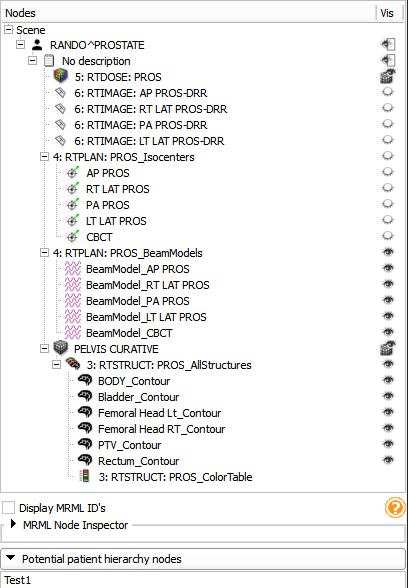Documentation/Nightly/Modules/SubjectHierarchy
From Slicer Wiki
Home < Documentation < Nightly < Modules < SubjectHierarchy
|
For the latest Slicer documentation, visit the read-the-docs. |
Introduction and Acknowledgements
| |||||||
|
Module Description
The SubjectHierarchy module acts as a central data-organizing point in Slicer. All DICOM data is autmatically added to the tree. Non-DICOM data can be parsed if loaded from a local directory structure, or has to be manually added (non-SH nodes are the ones on the bottom with no icons). Subject hierarchy nodes provide features for the underlying data nodes, including cloning, bulk transforming, bulk show/hide, type-specific features, and basic node operations such as delete or rename. Additional plugins can provide other type-specific features and general operations, see Subject hierarchy labs page
Use Cases
TutorialsNone specifically for Subject Hierarchy yet How to
|
Panels and their use
- Subject hierarchy tree (top)
- Contains all the objects in the Subject hierarchy in a tree representation.
- The only items that exist in the tree before importing any data are the default contour set and its corresponding color table, which facilitates Contour node creation without having any DICOM data imported
- MRML Node Inspector (closed drop-down panel under the tree)
- Displays the attributes of the currently selected Subject hierarchy node. Can be edited by double-clicking on an attribute name or value
- Potential subject hierarchy nodes list
- List of nodes that are currently outside the subject hierarchy, but can be added. Nodes are listed in this list if there is at least one plugin that can do the adding of that node.
Similar Modules
N/A
References
- Manual editing of contours can be done in the Contours module
Information for Developers


